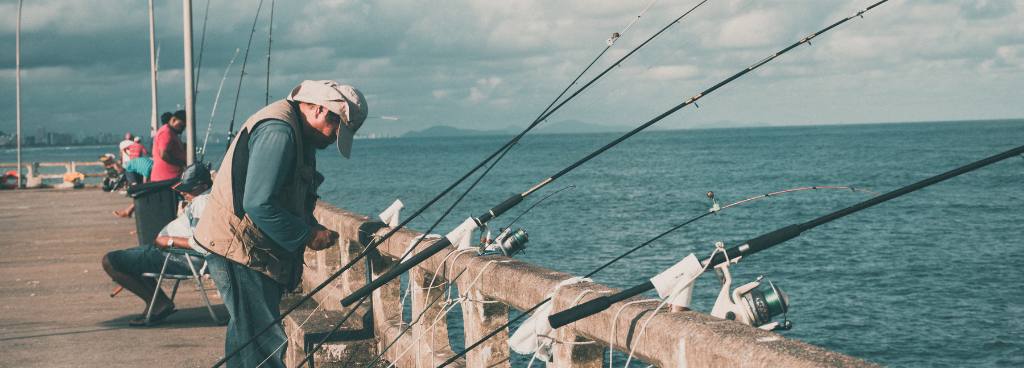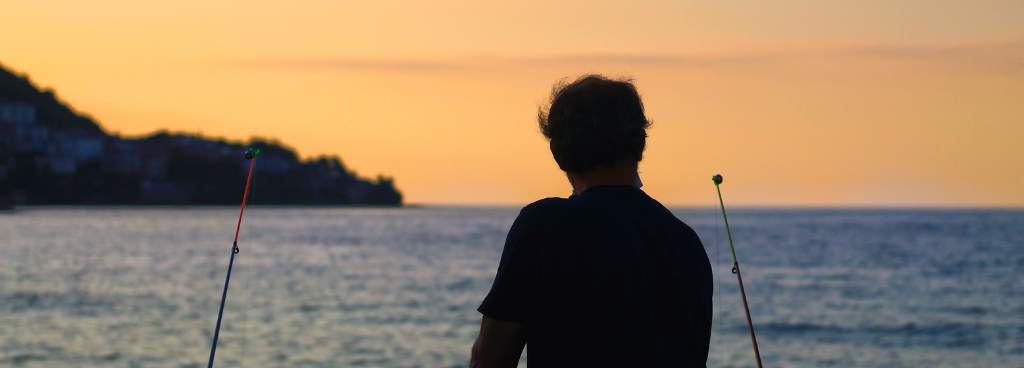Stories Worth Reeling In...
Last Updated on October 8, 2023
Pier fishing, often referred to as “dock fishing,” “pier angling,” or “pier fishing,” offers a unique and exciting way to reel in the big one. Whether you’re a seasoned angler or new to the world of fishing, the experience of landing a fish from a pier is both thrilling and rewarding. Let’s delve into the art and science of landing fish from a pier, exploring the ins and outs of this distinctive style of fishing.
By the time you finish this article, you’ll be well-prepared to land fish from a pier and make the most of your pier fishing experiences. Get ready to cast your line, feel the tug of a fish beneath the pier, and savor the satisfaction of a successful catch.
Table of Contents
Pier fishing, in essence, is the practice of angling from a platform that extends over a body of water, such as a pier or dock. It’s a form of fishing that combines the excitement of angling with the convenience and accessibility that a pier offers. But what makes pier fishing so appealing to anglers of all levels?
Pier fishing holds a unique allure for anglers, and it’s not hard to see why. First and foremost, piers grant us access to deeper waters without the need for a boat, making them the ideal spots for both seasoned anglers and beginners. They also provide a stable and safe platform, making fishing more accessible to those who might not be comfortable on a boat.
One of the most compelling aspects of pier fishing is its versatility. Whether you’re interested in saltwater or freshwater fishing, pier angling has something to offer.
Now that we’ve explored the captivating world of pier fishing, it’s time to dive into the nitty-gritty of the gear and tackle you’ll need to make the most of your pier angling experience. Just like any other form of fishing, having the right equipment is essential for success.
The cornerstone of your pier fishing setup is your fishing rod and reel. These components play a vital role in your ability to cast, control your line, and reel in your catch.
The type of fish you’re aiming to catch will determine your bait selection.

Pier fishing is an art, and like any art form, it involves a diverse range of techniques to master. Let’s dive into some tried-and-true pier fishing techniques and when to deploy them for the best results.
1. Bottom Fishing
2. Casting
3. Trolling
The choice of your fishing spot on the pier can make or break your day. Here’s how you can ensure you’re in the prime location to reel in those big catches.
1. Understanding Tides and Currents
Tides and currents play a pivotal role in the behavior of fish. They influence the movement of baitfish and, subsequently, the larger predator fish that feed on them. Here’s a basic guide:
2. Understanding the Wind
Wind can significantly affect your casting and the behavior of fish. A gentle breeze can be refreshing, but strong winds can make fishing challenging. Here’s what to consider:
3. Scanning the Water
Before you even cast a line, take some time to scan the water around the pier. Look for signs of fish activity such as baitfish jumping out of the water, birds diving for prey, or ripples on the surface. These signs can give you valuable clues about where to start fishing.
5. Adjusting to the Season
Different fish species are active during various seasons. Research what species are commonly caught during the time of your fishing trip and adjust your location accordingly. For example, during the warmer months, fish that prefer warmer waters may be closer to the surface, while during colder months, they may be deeper.

Landing a fish from a pier can be both exhilarating and challenging. Here’s how to do it safely and ensure the well-being of the fish.
1. Maintain Proper Tension
When reeling in the fish, keep tension on the line, but don’t overpower it. Allow the fish to make runs if needed, but always maintain control. If the fish is putting up a strong fight, be patient, and avoid jerking or yanking the rod.
2. Handle the Fish with Care
Wet your hands before touching the fish to avoid damaging their sensitive skin. Hold the fish firmly but gently. Large fish may require two hands for support. Avoid squeezing or putting excessive pressure on the fish’s body. Never touch their gills as they are extremely delicate.
3. Use Pliers or Dehooking Tools
If the fish is hooked deeply, use pliers or a dehooking tool to remove the hook. If the fish has swallowed the hook, it’s often best to cut the line as close to the hook as possible and leave the hook in the fish. It’s more humane and gives the fish a better chance of survival.
4. Practice Catch-and-Release
If you’re not planning to keep the fish for consumption, practice catch-and-release. Release the fish gently into the water, supporting it until it regains its strength and swims away on its own. Avoid throwing the fish back or dropping it from a height.
Absolutely! Pier fishing is a great choice for beginners. Piers provide a stable platform, access to a variety of fish species, and the opportunity to learn from experienced anglers.
While specialized pier fishing rods exist, a versatile medium-heavy spinning rod is often sufficient. Choose one that matches your target species and fishing style.
Piers are primarily used for saltwater fishing due to their location along coastlines. However, some piers are near brackish or freshwater areas and can be suitable for both types of fishing.
Yes, some piers are known for big game fishing. Look for piers near deepwater channels or with access to the open ocean for a chance to catch larger species.
Some piers have lighting for nighttime fishing. Check the pier’s rules and local fishing regulations regarding night fishing.
Now, it’s time to make your mark on the pier and create unforgettable fishing stories. Share your experiences with fellow anglers, and don’t hesitate to seek advice or offer your insights to the pier fishing community.
Pier fishing isn’t just a hobby; it’s a journey filled with surprises and discoveries. So, gather your gear, hit the pier, and let the adventures unfold. Each cast brings the promise of a new tale to tell and a deeper connection to the boundless world beneath the waves. Happy pier fishing!